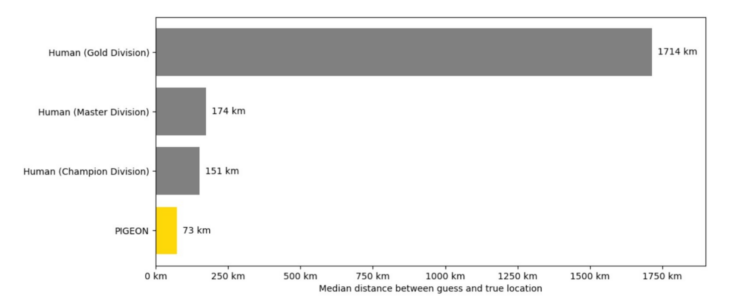In short
- AI models developed by Stanford University excel in image geolocalization.
- The Predicting Image Geolocations (PIGEON) system examines images to determine their capture locations.
- PIGEON achieves a 95% accuracy in correctly identifying the country and can pinpoint a location within approximately 16 miles.
Stanford University researchers have developed AI models capable of accurately determining the location where a photo was taken. While their solution presents valuable applications, it also raises significant ethical considerations that require careful attention.
If your vacation picture showcases the Taj Mahal or the Great Wall of China in the background, it’s relatively easy to determine the photo’s location. However, if the photo was taken in a remote field with a nondescript background, identifying the exact location becomes a more intricate task.
This is precisely the type of challenge that over 50 million GeoGuessr players find engaging and enjoyable.
Three researchers from Stanford University, who were enthusiastic players of GeoGuessr, decided to explore how AI models would perform against top human players. They utilized CLIP, a neural network developed by OpenAI, as the foundation for two distinct image geolocalization models.
The initial model, Predicting Image Geolocations (PIGEON), underwent training using a dataset comprising approximately 100,000 locations from the GeoGuessr game. For each location, PIGEON received a 360-degree panorama created from a set of four Google Street View images.
The second model, Predicting Image Geolocations with Omni-Terrain Training Optimizations (PIGEOTTO), underwent training using an exclusive dataset of over 4 million geo-tagged images from Flickr, encompassing diverse locations worldwide.
When given a Google Street View image from any global location, PIGEON demonstrated an impressive accuracy, correctly identifying the country 95% of the time and pinpointing the location within approximately 16 miles in over 40% of instances. The researchers subsequently challenged PIGEON against the top GeoGuessr players, where it outperformed them by a substantial margin.

PIGEOTTO, a more versatile model, did much better than the current top models on location-finding tests.
When PIGEON faced off against Trevor Rainbolt, who’s really good at geoguessing, the AI won several times. It’s like when Deep Blue beat Gary Kasparov at chess in 1997.
Ethical Concerns
These models have applications beyond GeoGuessr, extending to areas such as autonomous driving, navigation, geography education, open-source intelligence, and visual investigations in journalism.
As these models become more accurate, privacy concerns grow. Beyond pinpointing locations, there are worries about models inferring sensitive information such as local income, race, education, and voting patterns from image geolocation data.
The defense industry has a keen interest in the capabilities of these models. The researchers at Stanford University highlighted that, “To our knowledge, this is the first state-of-the-art image geolocalization paper in the last five years that is not funded by military contracts.”
The dual-use risks associated with these models raise ethical concerns that need careful management. With companies like Meta training their models on your Instagram photos, it’s essential to be mindful that your selfies may reveal more to AI than you might realize.



